This article was co-authored by Chris M. Matsko, MD. Dr. Chris M. Matsko is a retired physician based in Pittsburgh, Pennsylvania. With over 25 years of medical research experience, Dr. Matsko was awarded the Pittsburgh Cornell University Leadership Award for Excellence. He holds a BS in Nutritional Science from Cornell University and an MD from the Temple University School of Medicine in 2007. Dr. Matsko earned a Research Writing Certification from the American Medical Writers Association (AMWA) in 2016 and a Medical Writing & Editing Certification from the University of Chicago in 2017.
There are 18 references cited in this article, which can be found at the bottom of the page.
wikiHow marks an article as reader-approved once it receives enough positive feedback. This article received 16 testimonials and 89% of readers who voted found it helpful, earning it our reader-approved status.
This article has been viewed 942,176 times.
Whitlow is an infection of the fingertip caused by the Herpes Simplex Virus (HSV) a virus that affects as much as 90% of people worldwide.[1] Seek treatment as soon as you notice the infection, or if your doctor notices the infection worsening. The first bout of whitlow is usually the most troublesome, with recurrences usually being lesser in pain and length. Since about 20 to 50% of cases are recurrences, prevention is key.[2]
Steps
Diagnosing Whitlow
-
1Recall if you've had contact with someone who has herpes.[3] Herpes simplex virus is very common and highly contagious. HSV -1 commonly affects the face, and often causes cold sores (painful blisters on the lips). HSV-2 tends to cause painful genital blisters.
- HSV-1 can spread through kissing or oral sex, while HSV-2 can spread through skin to skin contact with infected genitals.
- Be aware that HSV can have a long-dormant period. You may have contracted herpes long ago, but the virus may have stayed dormant in the nerve cells where it resides. Stress and lack of immunity (getting sick) are common triggers for activation of the virus from the dormant phase.
- Even if you can't remember ever being in contact with someone with HSV-1, consider if you've ever had a cold sore or fever blister.
-
2Look for early symptoms. In the "prodrome" or early phase of any disease, symptoms indicate the onset of a condition. For whitlow, these symptoms usually appear 2 to 20 days after initial exposure, and include:[4]
- Fever
- Fatigue
- Unusual pain
- Numbness
- Tingling in the area[5]
Advertisement -
3Observe more typical whitlow symptoms in the disease phase.[6] Once the initial prodrome phase has passed, you will see far more specific symptoms that point clearly to whitlow:
- Swelling, redness, and rash, with fluid filled vesicles around the area.[7]
- The vesicles may rupture, and a white, clear, or bloody fluid will come out.
- These vesicles may merge and take on a black/brown color.
- Ulceration, or a break in the skin, may develop later.
- Symptoms can resolve from anywhere from 10 days to 3 weeks.
-
4Get a formal medical diagnosis. Since whitlow is a more of a clinical diagnosis, the medical staff might not order any additional tests. Instead, the doctor will take your symptoms and medical history — including an HSV diagnosis — into consideration to diagnose whitlow. The doctor may also take a tube of your blood to order a complete blood count (CBC) with a differential (a count of your white blood cells). This will let them see if you have enough immune cells to fight infections, or if you have an underlying immune dysfunction that causes reoccurring infections.
- The doctor may want to test for herpes if you haven't been diagnosed with it. They may analyze your blood for herpes antibodies, order a PCR test (for the detection of herpes DNA), and/or order a viral culture (to see if actual herpes virus is growing from your blood).[8]
- Other tests might include a viral culture, which can take 1-2 days and is usually more expensive, but is more accurate, and the Tzanck test which is not as common, but can be helpful in certain cases.[9]
Getting Initial Treatment
-
1Take antiviral medication. If whitlow is diagnosed within 48 hours after the symptoms start, the doctor can prescribe antiviral medication to you. The medicine might be topical (a cream) or oral (pills), and it will lessen the severity of the infection and promote quicker healing.[10] Thus, it's crucial that you seek immediate medical advice.
- Commonly prescribed medications include topical acyclovir 5%, oral acyclovir, oral Famciclovir or valacyclovir.
- Take the medications as advised by your doctor or pharmacist.
- Dosages will be adjusted for children, but the treatments will remain the same.
-
2Take precautions to prevent spreading the infection.[11] Since the virus can spread through contact, your healthcare provider may advise you not to touch others, or even to avoid touching yourself with the infected finger. In particular, avoid touching body parts that contain fluids or bodily secretions. These include the eyes, mouth, tongue, genitals, ears, and breast.
- If you wear contacts, don't wear them until the infection has resolved. Touching the contacts, then inserting them into your eyes, could infect the eye.
-
3Wrap the infected area.[12] Your healthcare provider may wrap the infected area with a bandage, cloth, or any form of dry wrap with medical tape. You can do this easily at home, too, by buying the bandages or wraps from your local pharmacy. To keep the wrap fresh, change it daily. To be extra safe, your doctor may advise you to both wrap the infected area and wear a glove over it.
-
4Monitor children closely. It can be difficult enough to be conscious of your hands as an adult, but children often find it quite difficult. You don't want them sucking on infected fingers, touching their eyes, or any other areas of the body that contain or carry bodily fluids. Even after wrapping the infected area, watch them closely to make sure everything is as it should be.
-
5Get pain medication if necessary.[13] The doctor may provide or advise you to use over-the-counter pain medication like Advil, Tylenol, ibuprofen or aspirin. They should ease pain while the infection heals by reducing inflammation to the area. If you saw a doctor within 48 hours of noticing the symptoms, the doctor might not recommend anything beyond pain medication.
- Children and teenagers with viral infections are advised not to take aspirin. There's a risk of developing a multi-organ fatal condition known as Reye’s syndrome.
- Seek expert medical advice before taking over-the-counter pain meds for viral infections.
- Take all medications as described either by your healthcare provider or on the label. Be careful not to exceed the maximum daily dose.
-
6Ask the doctor to test for bacterial infection.[14] If you try to burst or drain the vesicles on your finger on your own, you give debris and bacteria opportunity to invade. Whitlow is a viral infection, but you can compound the issue with a bacterial infection (this can appear dark, have an odor, and may have a whitish pus discharge).
- The doctors will order a complete blood count with differential (to detect immune cells or white blood cells) if they suspect bacterial infection.
- The white blood cells will be high if you have a bacterial infection.
- They may reorder this test after you've completed your antibiotic course to check for normal levels of white blood cells. This isn't always necessary if symptoms have calmed and they have no further suspicion.
-
7Take antibiotics as prescribed. A doctor will likely want to confirm a bacterial infection before prescribing antibiotic treatment. This is because overuse of antibiotics can cause bacteria to adapt and become resistant to treatment. However, once bacterial infection is confirmed, antibiotic treatment is very simple.[15]
- Always follow your doctor or the label's directions precisely.
- Make sure to complete the full course of treatment, even if symptoms seem to resolve.
Dealing with Whitlow with Home Remedies
-
1Do not pick at vesicles. You may be tempted to pick at or try to burst the vesicles, just as people can't resist the urge to pop pimples. However, this makes the wound open to bacterial infection.[16] Furthermore, the released fluid carries the virus, and can spread the viral infection further.
-
2Soak the infected area. Warm water may provide pain relief from whitlow. This is best used when painful lesions start appearing on the infected area.
- Fill a container deep enough for the infected area with warm water. Soak the infected area for 15 minutes.
- Repeat as the pain reoccurs.
- When finished, wrap the area with a dry bandage wrap to prevent disease transmission.
-
3Use an ice pack. The cold will numb the nerves in the surrounding area, relieving the pain. It can also help reduce any inflammation or swelling that would contribute to the pain. You can either buy an ice pack from the pharmacy, or just wrap some ice cubes in a towel. Gently apply the pack to the infected area.[17]
- Never apply ice directly to the skin and never for more than 15-20 minutes at a time.[18]
-
4Reduce your stress levels. This can be challenging, but making an effort can help prevent future outbreaks. HSV can lie dormant in nerve cells for quite some time, and in some cases stress can activate it. Some options to deal with stress include getting regular exercise, cutting back on alcohol or caffeine if you use them too frequently, quitting smoking, eating healthier and getting a good night's sleep.[19]
- Meditation and yoga can also help some people to reduce stress.
Expert Q&A
Did you know you can get expert answers for this article?
Unlock expert answers by supporting wikiHow
-
QuestionHow do I treat whitlow on my middle finger?
 Chris M. Matsko, MDDr. Chris M. Matsko is a retired physician based in Pittsburgh, Pennsylvania. With over 25 years of medical research experience, Dr. Matsko was awarded the Pittsburgh Cornell University Leadership Award for Excellence. He holds a BS in Nutritional Science from Cornell University and an MD from the Temple University School of Medicine in 2007. Dr. Matsko earned a Research Writing Certification from the American Medical Writers Association (AMWA) in 2016 and a Medical Writing & Editing Certification from the University of Chicago in 2017.
Chris M. Matsko, MDDr. Chris M. Matsko is a retired physician based in Pittsburgh, Pennsylvania. With over 25 years of medical research experience, Dr. Matsko was awarded the Pittsburgh Cornell University Leadership Award for Excellence. He holds a BS in Nutritional Science from Cornell University and an MD from the Temple University School of Medicine in 2007. Dr. Matsko earned a Research Writing Certification from the American Medical Writers Association (AMWA) in 2016 and a Medical Writing & Editing Certification from the University of Chicago in 2017.
Family Medicine Physician
Warnings
- Failure to treat properly can result in permanent damage to or loss of the finger.[20]⧼thumbs_response⧽
References
- ↑ https://www.ncbi.nlm.nih.gov/books/NBK47447/
- ↑ https://www.aafp.org/afp/2003/1201/p2167.html
- ↑ http://www.webmd.com/genital-herpes/pain-management-herpes
- ↑ https://emedicine.medscape.com/article/788056-overview
- ↑ http://www.skinsight.com/adult/herpeticWhitlow.htm
- ↑ http://www.skinsight.com/adult/herpeticWhitlow.htm
- ↑ http://www.nhs.uk/conditions/herpetic-whitlow/Pages/Introduction.aspx
- ↑ http://www.nytimes.com/health/guides/disease/herpes-simplex/diagnosis.html
- ↑ https://emedicine.medscape.com/article/788056-workup
- ↑ Clark D. Dec 1, 2003. Common Acute Hand Infections. American Family Physician Journal. 68(11):2167-2176.
- ↑ http://www.nhs.uk/conditions/herpetic-whitlow/Pages/Introduction.aspx
- ↑ http://www.nhs.uk/conditions/herpetic-whitlow/Pages/Introduction.aspx
- ↑ http://www.webmd.com/drug-medication/otc-pain-relief-10/pain-relievers-nsaids
- ↑ http://www.webmd.com/a-to-z-guides/bacterial-and-viral-infections
- ↑ http://www.webmd.com/a-to-z-guides/using-antibiotics-wisely-topic-overview?page=2
- ↑ http://www.mayoclinic.org/diseases-conditions/infectious-diseases/expert-answers/infectious-disease/faq-20058098
- ↑ https://www.skinsight.com/skin-conditions/adult/herpetic-whitlow
- ↑ https://www.uofmhealth.org/health-library/sig43888spec
- ↑ https://www.mayoclinic.org/healthy-lifestyle/stress-management/in-depth/stress-relievers/art-20047257
- ↑ emedicinehealth, Finger Infection, http://www.emedicinehealth.com/finger_infection/article_em.htm
About This Article
To treat whitlow, visit your doctor as soon as you notice symptoms, like numbness, tingling, or unusual pain. Then, take the medication prescribed by your doctor, such as topical acyclovir 5% or oral acyclovir. Additionally, soak the affected area in warm water for quick pain relief. If you have blisters, avoid popping them, since this can lead to an infection. You should also wrap the affected fingers in a bandage to prevent the whitlow from spreading. For tips from our Medical co-author on how to identify the early symptoms of whitlow, read on!
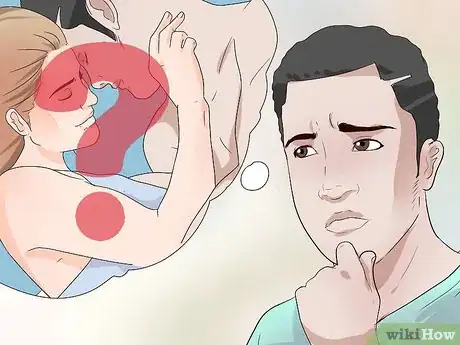




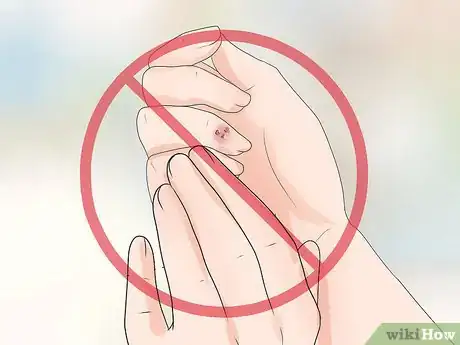


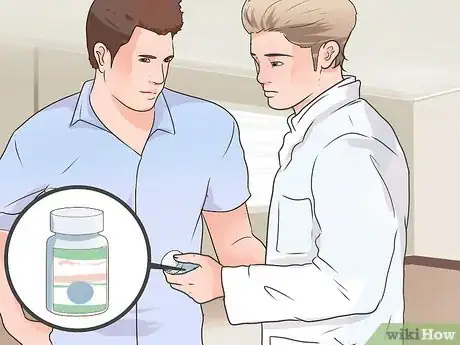
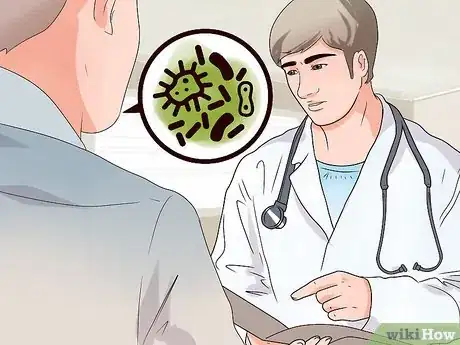


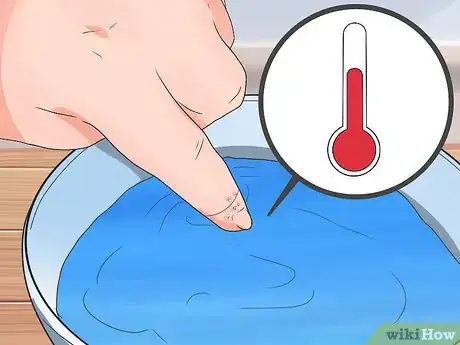
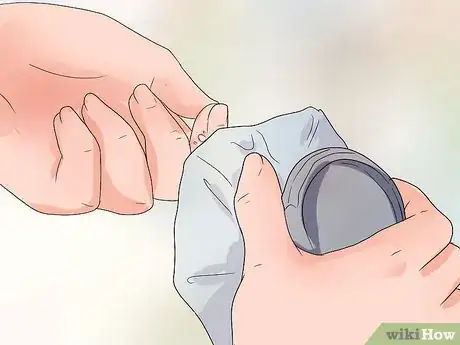

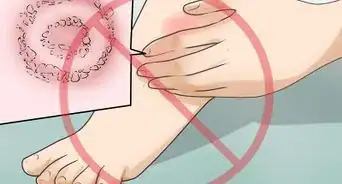

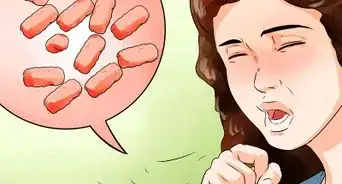
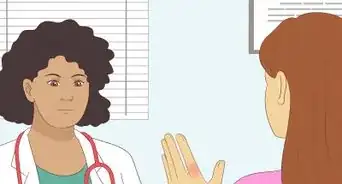
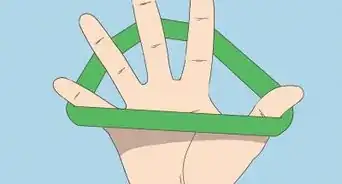

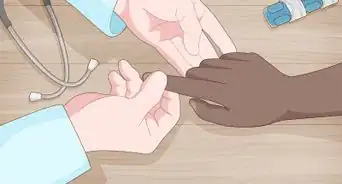
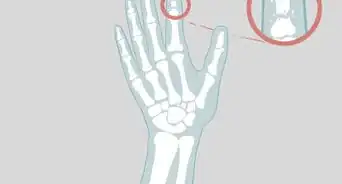


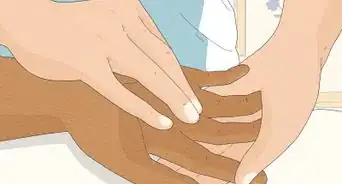












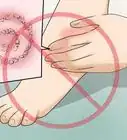

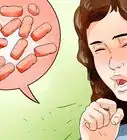
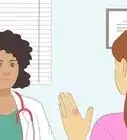



































Medical Disclaimer
The content of this article is not intended to be a substitute for professional medical advice, examination, diagnosis, or treatment. You should always contact your doctor or other qualified healthcare professional before starting, changing, or stopping any kind of health treatment.
Read More...